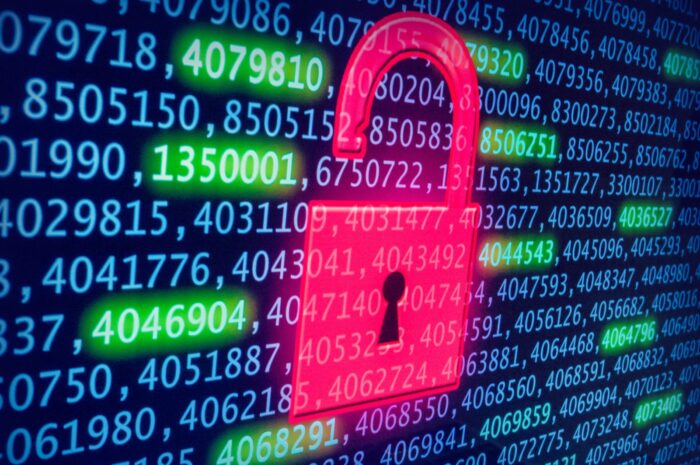
In today’s digital age, data is one of the most valuable assets a company can possess. However, with the rise of cyberattacks and data breaches, protecting confidential data has become a top priority for many businesses. One way to do this is through data masking. In this article, we’ll explore what data masking is, its benefits, and why it’s crucial in protecting confidential data.
Introduction
Data masking is a technique used to protect sensitive or confidential data by masking or hiding certain portions of the data. This technique involves replacing sensitive data with fictitious but realistic data so that the original data is not visible or accessible to unauthorized users or applications.
Data masking can be applied to different types of data such as personally identifiable information (PII), credit card numbers, social security numbers, and other sensitive data. This technique is commonly used in testing, development, and training environments, where realistic data is required for testing or other purposes, but the actual sensitive data cannot be used due to privacy or security concerns.

Common Data Masking Methods
Data masking is the process of concealing sensitive data with a non-sensitive equivalent or a randomly generated value, while preserving its functionality. The masked data looks and behaves like the original data, but it no longer reveals any sensitive information. Data masking techniques can include various methods such as substitution, shuffling, encryption, and other techniques that modify the data in a way that it remains realistic and valid but is no longer identifiable as the original sensitive data. This helps to protect confidential data from unauthorized access, while still allowing authorized users to access and use the masked data for legitimate purposes.
Here are some of the most common data masking methods:
- Substitution: This method involves replacing the original sensitive data with a different value that has no correlation to the original value. For example, a credit card number can be substituted with a fictitious number that has the same number of digits and follows the same format.
- Shuffling: This method involves randomly shuffling the characters or digits in the original sensitive data. For example, a name can be shuffled so that the letters are in a different order but the name remains recognizable.
- Encryption: This method involves converting the original sensitive data into an encoded or encrypted format that can only be decoded by authorized users or applications. For example, a social security number can be encrypted using a secure encryption algorithm.
- Masking: This method involves partially or fully hiding the original sensitive data. For example, a credit card number can be masked so that only the last four digits are visible.
- Nulling: This method involves replacing the original sensitive data with null values or blanks. For example, a birthdate can be nullified so that it appears as a blank field.
- Tokenization: This method involves replacing the original sensitive data with a token or reference value that has no meaning to unauthorized users. The token can be used to retrieve the original data by authorized users when needed.
These are just a few of the many data masking methods available, and the choice of method will depend on the type of data being masked and the level of protection required.

Benefits of Data Masking
Data masking provides several benefits to businesses that need to protect their confidential data. Here are some of the most significant advantages:
- Enhanced data security: Data masking helps to protect sensitive data from unauthorized access, reducing the risk of data breaches and other security incidents. This helps to ensure that confidential data remains safe and secure.
- Compliance with regulations: Many industries are subject to regulations that require the protection of sensitive data, such as HIPAA for healthcare data and GDPR for personal data. Data masking can help businesses comply with these regulations by providing a way to protect sensitive data.
- Improved data privacy: Data masking helps to protect the privacy of individuals whose data is being processed or stored. This can help to build trust with customers and other stakeholders, and avoid negative consequences from breaches of privacy.
- Facilitates testing and development: In testing and development environments, realistic data is often needed to ensure that applications and systems function properly. Data masking can provide this data while protecting sensitive information, reducing the risk of data breaches and other security incidents.
- Cost-effective solution: Data masking is a cost-effective solution for protecting sensitive data, as it does not require the creation or acquisition of new infrastructure or software. This makes it an attractive option for businesses looking to enhance data security while managing costs.

Why Data Masking is Crucial
Data masking is crucial in protecting confidential data for several reasons:
- Protecting sensitive data: Data masking helps to protect sensitive data from unauthorized access, reducing the risk of data breaches and other security incidents. This is particularly important for industries that deal with sensitive information such as healthcare, finance, and government.
- Complying with regulations: Complying with regulations is an important reason for implementing data masking. Many industries are subject to regulations that require the protection of sensitive data, such as HIPAA for healthcare data and GDPR for personal data. Data masking can help businesses comply with these regulations by providing a way to protect sensitive data while still allowing authorized users to access and use the data for legitimate purposes. By masking or hiding certain portions of the data, data masking can prevent unauthorized access and help to ensure that confidential data remains safe and secure.
- Reducing the risk of data breaches: Data breaches can be costly for businesses, resulting in financial losses, legal liabilities, and damage to reputation. Data masking can help to reduce the risk of data breaches by making sensitive data unreadable to unauthorized users.
- Preserving data utility: In testing and development environments, realistic data is often needed to ensure that applications and systems function properly. Data masking can provide this data while protecting sensitive information, preserving the utility of the data.
- Protecting individual privacy: Data masking can help to protect the privacy of individuals whose data is being processed or stored. This can help to build trust with customers and other stakeholders, and avoid negative consequences from breaches of privacy.

Conclusion
Data masking is an effective technique for protecting confidential data in today’s digital age. It ensures that sensitive information remains hidden from unauthorized users while allowing authorized users to access and use data without exposing sensitive information.











